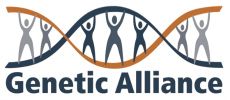BARTH SYNDROME
ICD-10 Code for Barth Syndrome E78.71
When you or your loved one is first diagnosed with Barth syndrome (BTHS), you can feel overwhelmed. You may not even have heard of BTHS until now. Learning all you can is a major step toward taking charge of your illness — and your life.
Barth syndrome (BTHS; OMIM #302060) is a serious X-linked genetic disorder, primarily affecting males. It is caused by a mutation in the tafazzin gene (TAZ, also called G4.5), resulting in an inborn error of lipid metabolism.
Barth syndrome (BTHS; OMIM #302060) is a rare, life-threatening genetic disorder, which primarily affects males. It is caused by a mutation in the TAFAZZIN gene, resulting in an inborn error of phospholipid metabolism, affecting many systems of the body.
Historically death from heart failure or infection occurred by three years of age, but with improved diagnosis, medical therapy and monitoring, survival has been extended, with many survivors now into their adult years. Survivors of BTHS, however, almost always live with extremely compromised physical health, and those few who enjoy relatively good health live every day with medical conditions that can become life-threatening with little or no warning. Someone with BTHS will likely suffer with varying degrees of BTHS symptoms.
It is critical always to remember that BTHS is a complex inborn error of metabolism. Because the disorder affects many systems of the body, treating a patient with BTHS often requires involvement of experts from a wide range of medical specialties.
INHERITANCE
As an X-linked genetic disorder BTHS is usually transmitted from mother to son (although there is a relatively high incidence of new mutations in BTHS and are several case reports of female BTHS patients). A mother who is a carrier of a BTHS variant in the TAFAZZIN gene shows no signs or symptoms of the disorder herself, probably due to skewed X-chromosome inactivation.
There is a 50% chance that a boy born to a female carrier will have BTHS, whereas girls born to a carrier have a 50% risk of being carriers themselves. All daughters of a male with BTHS will be carriers, however no sons will be affected. Because there are many non-carrier mothers, all mothers of BTHS children should be tested in order to determine the genetic risk in each family.
Any male child related through the female carrier line to a BTHS individual should be tested for the disorder, as there can be great variation in phenotype, even among affected siblings. Also note that several female BTHS cases have been confirmed and virtually asymptomatic adult male relatives of BTHS probands have been identified through extended family genetic testing.
CARDINAL CHARACTERISTICS
Though not always present, cardinal characteristics of this multi-system disorder often include combinations and varying degrees of:
- Cardiomyopathy (usually dilated with variable myocardial hypertrophy, sometimes with left ventricular noncompaction and/or endocardial fibroelastosis)
- Neutropenia (can be chronic, intermittent, cyclic, or not present)
- Low muscle mass and muscle weakness
- Growth delay (short stature in the early years, followed by accelerated growth in mid- to late puberty)
- Exercise intolerance due to early fatigue
- Feeding problems (e.g., difficulty sucking, swallowing, or chewing; aversion to some food textures; selective or picky eating; frequent vomiting)
- Cardiolipin abnormalities
- 3-methylglutaconic aciduria (variable but typically a 5- to 20-fold increase)
Barth syndrome (BTHS) is a complicated disorder and can be difficult to recognize because all manifestations may not be simultaneously present or apparent. The diagnosis of BTHS should be considered for a child or adult presenting with any one of its eight cardinal characteristics and in cases with family histories of multiple male deaths or fetal loss, because a diagnosis of BTHS otherwise can easily be missed. Lack of family history does not exclude the diagnosis of BTHS, as there is a relatively high frequency of new mutations.
ADDITIONAL CLINICAL PROBLEMS MAY OR MAY NOT INCLUDE
- Congestive heart failure
- Life-threatening bacterial infection
- Gross motor delay
- Risk of fatal arrhythmia
- Extreme fatigue
- Diarrhea and/or constipation
- Recurrent mouth ulcers
- Risk of thrombosis
- Hypoglycemia, including fasting hypoglycemia (most often in the newborn period)
- Chronic headache, abdominal pain, and/or body aches (especially during puberty)
- Osteoporosis
- Mild learning disabilities
CARDIAC DYSFUNCTION
The natural history of BTHS cardiac disease has been described as “undulating.” Both the character and severity of heart dysfunction can change significantly. The cardiomyopathy can evolve from dilated (thin) and/or hypertrophic (thick), or vice versa, and may or may not involve left ventricular noncompaction (LVNC), and sometimes hypertrabeculation. Furthermore, sometimes a patient sick enough to be awaiting a heart transplant can improve so dramatically as to be taken off the list, especially if the underlying metabolic abnormalities have been treated and improved. Unfortunately, the reverse also can happen, and heart function can deteriorate significantly, suddenly and unexpectedly, even during otherwise simple viral or bacterial infections. Vigilant cardiac monitoring is essential.
Life-threatening arrhythmias can occur, even when the heart function is in normal range.
NEUTROPENIA
When well, a BTHS individual can have an absolute neutrophil count (ANC) approaching zero, but this can rise to normal or above during an acute infection. Thus, there are times when a normal ANC can be a sign of a serious infection.
Many with BTHS have a normal body temperature that is substantially below 98.6°F (37°C), so even a mild fever may signify a problem.
Taking a rectal temperature is contra-indicated due to risk of serious infection resulting from the possible introduction of fecal organisms into the bloodstream.
Neutropenia places the individual with BTHS at an increased risk of acquiring serious infections such as bacterial pneumonia and skin abscesses. This can lead to sepsis. It is not always possible to predict when the person with BTHS is neutropenic. Some people experience neutropenia at regular intervals; this is known as cyclic neutropenia. Some people are always neutropenic; this is known as chronic neutropenia. Some people experience neutropenia with no predictability whatsoever; this is known as intermittent neutropenia. A common cold can be life-threatening for someone with BTHS when they are neutropenic. Death in BTHS is most commonly due to sepsis from neutropenia and heart failure.
NUTRITIONAL AND METABOLIC ISSUES
Because muscle is an important nutritional reserve during fasting, the intrinsically reduced muscle mass of BTHS individuals significantly limits their ability to fast. Even overnight fasting drains muscle reserves, causing relative hypoglycemia and, over time, further muscle atrophy.
Eating cornstarch (e.g., added to yogurt) or Extend Bars™ before bedtime can alleviate these problems.
BTHS individuals often tolerate illnesses poorly, especially those that include diarrhea or vomiting, given their reduced muscle mass resulting in diminished body stores of electrolytes and protein. Therefore, fluid and electrolyte (particularly potassium and phosphate) balance must be monitored closely and frequently during illnesses and caution exercised to prevent hyperkalemia when giving potassium-containing IV fluids. Underlying cardiac issues also must be considered in all of this.
Caloric requirements in someone with BTHS often are reduced because of substantially underdeveloped muscle mass. Trying to achieve standard caloric intake for age and weight often leads to vomiting and diarrhea.
Because rare but serious hypoglycemic crisis have occurred in BTHS, any symptoms of low blood sugar (weakness, pallor or sweating) must be taken seriously. The metabolic strategies used by BTHS cells to maintain normal energy production can cause sufficiently severe depletion of certain amino acids, most notably arginine, that cardiac and skeletal muscle protein synthesis is impaired. As a result, the use of extra dietary protein and supplements of arginine and other amino acids may be considered to raise amino acid levels to their mid-normal ranges and thereby reverse serious deterioration in cardiac function caused by cardiac muscle wasting.
Anesthesia for BTHS patients requires special consideration because of increased risks from the cardiac, muscular and metabolic issues involved in the disorder. Dilated cardiomyopathy is frequently present, the risk of ventricular arrhythmias is increased, and lactic acid may accumulate rapidly. The much reduced muscle mass of BTHS can lead to rapid electrolyte shifts and predispose BTHS patients to hypoglycemia. Thus, care should be taken to minimize pre- and post-operative fasting and to avoid use of lactated intravenous fluids. (A BTHS-specific anesthesia protocol can be found in the fact sheet section of this website (link provided below).
LOW MUSCLE MASS AND FATIGUE
All muscles, including the heart, have a cellular deficiency which limits their ability to produce energy. This causes extreme fatigue during any endeavor that requires strength or stamina (e.g., walking, reading, writing, and growing and thinking). Low muscle mass significantly limits the individual’s ability to tolerate periods of fasting. Even during brief periods of time, they are at risk of becoming hypoglycemic. Serious hypoglycemic crisis situations have occurred in BTHS. Any symptoms of low blood sugar (e.g., onset of excessive weakness, change of pallor, excessive sweating) must be taken seriously.
Given their diminished body stores, BTHS individuals often tolerate illnesses poorly, especially those that include diarrhea or vomiting.
GROWTH DELAY
Most individuals with BTHS are below-average in weight and height, often substantially so. Short stature in early years is often followed by an accelerated growth pattern during mid-to-late phase of puberty. Poor growth is often assumed to be evidence of poor nutrition, but this is not the case. Fortunately, the older individuals with BTHS have grown to average and above average heights, but their growth takes longer to come to completion than their peers.
EXERCISE INTOLERANCE
Symptom severity of BTHS is highly variable, even in families where there is more than one person diagnosed with the condition. Amongst those who have BTHS, some have weaker hearts than others, some have weaker immune systems than others, and some have slower physical developmental rates than others. However, almost all individuals with BTHS suffer from muscle weakness and a general fatigue, which significantly limits their ability to perform normal life activities.
It should be noted again that relatively good health in someone with BTHS offers no indication of disease severity in the future. Therefore, it is important to understand that a someone with BTHS wakes up every morning and goes to sleep every night with a life-threatening condition. Some individuals are underweight, frail, easily fatigued, and easily identifiable as “sick,” while others have appeared healthy and strong for years only to suffer sudden illness.
In order to fight their symptoms, individuals with BTHS must be carefully monitored by doctors.
HELPFUL LINKS
Last updated 3/3/2019













